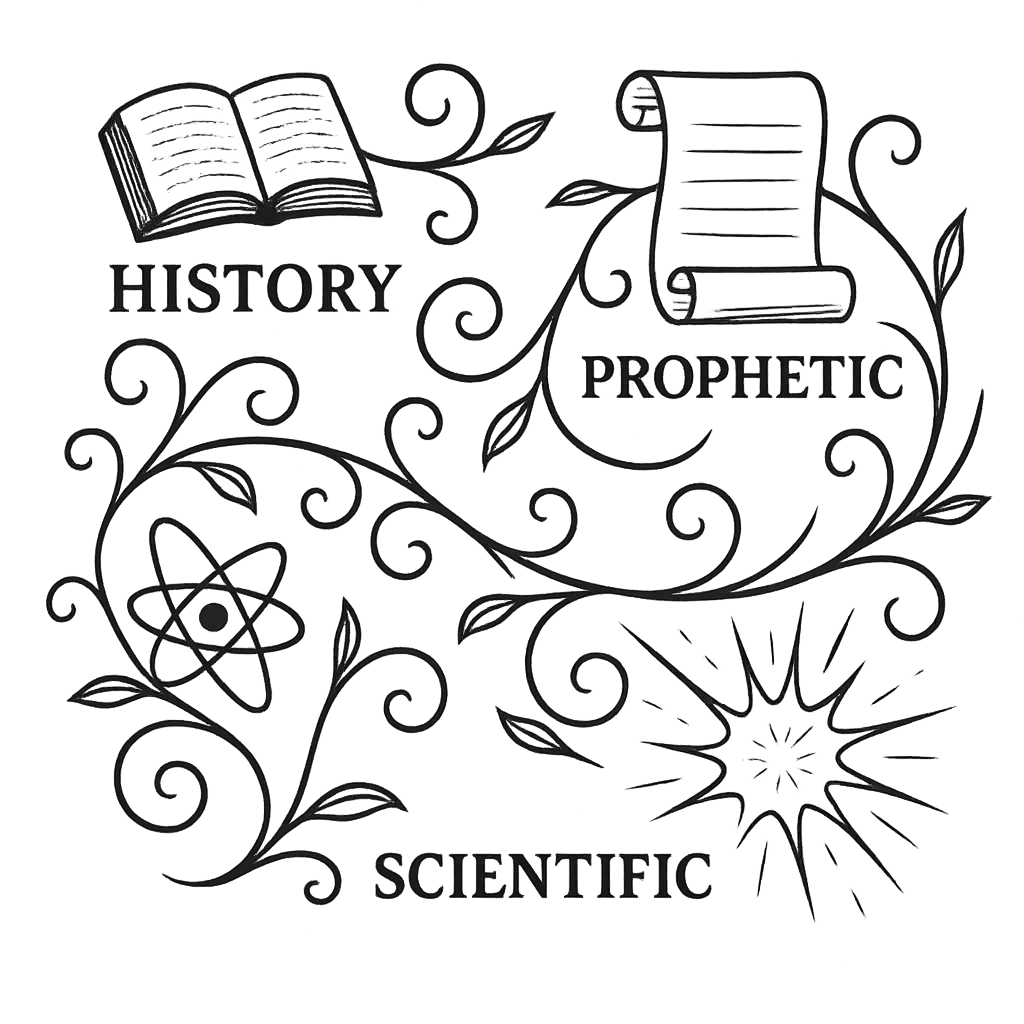Often hailed as the greatest archeological discovery of the 20th century, the Dead Sea Scrolls not only bridge a historical gap of over a thousand years in biblical documentation, but they also demolish the common narrative that the Bible has been tampered with over time. Instead, they show careful preservation, predictive prophecy, and deep insight into ancient Jewish faith and practice.
Let’s unpack why the Scrolls still matter historically, theologically, and apologetically.
📜 The Oldest Known Biblical Manuscripts
The Dead Sea Scrolls include the earliest known surviving copies of the Hebrew Bible, dating from the 3rd century BCE to the 1st century CE, over a thousand years older than the Masoretic Text, which served as the basis for most modern Old Testament translations.
Before these scrolls were found, critics loved to point out that our earliest Hebrew manuscripts were from around 1000 AD — leaving plenty of room (in their eyes) for errors and manipulation to sneak in. But the Dead Sea Scrolls shut that down. They proved that much of the Old Testament as we know it today already existed centuries before Jesus, and with remarkable consistency.
✍️ Textual Accuracy Across Centuries
One of the biggest takeaways from the Scrolls is how amazingly accurate the transmission of Scripture has been over time.
The Great Isaiah Scroll (1QIsaᵃ), dated around 125 BCE, was found to be about 95–99% identical to the Masoretic Text we rely on today. And that 1–5%? It’s mostly spelling differences, minor grammatical shifts, and stylistic choices—nothing that impacts doctrine, prophecy, or theology.
This directly challenges the “Bible has been changed” objection. You can now point to hard archaeological evidence showing Scripture has been faithfully copied across centuries.
📚 Volume, Variety & Canon Representation
More than 900 manuscripts were discovered across 11 caves near Qumran, and among them were texts from 38 of the 39 Old Testament books—the only missing one is Esther, likely because it doesn’t mention God directly (which may have made it less favored by the Qumran sect).
But it wasn’t just Bible books that turned up. The Dead Sea Scrolls discovery also contained:
- Apocryphal texts (like 1 Enoch, Tobit)
- Sectarian documents (like the Community Rule)
- Calendars, hymns, commentaries, and war scrolls
This treasure trove gives us a rare glimpse into Second Temple Judaism, showing how diverse and deeply theological this period was. It also confirms that many books we consider canonical were already revered hundreds of years before any council “decided” on them..
✨ Pre-Christian Prophecies Locked in Time
Here’s one of the most powerful points: the Dead Sea Scrolls prove that key messianic prophecies, like Isaiah 53, were not invented or inserted after the fact. They were already in circulation centuries before the time of Christ.
- Isaiah 53, which describes a suffering servant pierced for our transgressions, was fully intact in the Great Isaiah Scroll.
- That means this prophecy was known and read well before Jesus was even born.
This completely dismantles the claim that early Christians retrofitted the Old Testament to align with Jesus’ life. These were predictive, not reactive, texts.
🎥 Allen Parr’s 9-Minute Breakdown
If you’re looking for a quick but solid overview of the Dead Sea Scrolls including their discovery, meaning, and impact, Allen Parr does an excellent job breaking it down in just 9 minutes. It’s great for anyone who wants to grasp the basics without getting bogged down in scholarly jargon.
🎙️ Wes Huff vs. the Internet Outrage Mob
Recently, Wes Huff made an appearance on the Joe Rogan Podcast, where he said the Isaiah Scrolls were “word for word” the same as what we have today. That sparked a wave of online criticism and “gotcha” posts.
But the outrage was blown way out of proportion. What Wes clearly meant — and what’s backed by the data — is that the scrolls are about 95–99% identical, and the remaining 1–5% differences are trivial spelling variations that don’t touch theology.
To his credit, Wes owned it. He followed up with a lighthearted and honest 8-minute video where he explained the issue and clarified the facts with humility and humor. Highly recommend checking it out.
🤔 Why It All Still Matters
The Dead Sea Scrolls are more than dusty artifacts. They’re a direct challenge to modern skepticism, a vindication of Scripture’s preservation, and a time capsule of ancient faith.
They confirm:
- That Scripture hasn’t been corrupted, but has rather been preserved over millennia.
- That messianic prophecies were documented before Jesus.
📖 References
Academic and Scholarly Sources
- Geza Vermes, The Complete Dead Sea Scrolls in English. Penguin Classics, 2004.
- Peter W. Flint and James C. VanderKam, The Meaning of the Dead Sea Scrolls. HarperOne, 2002.
- Lawrence H. Schiffman, Reclaiming the Dead Sea Scrolls. Jewish Publication Society, 1994.
- F. F. Bruce, The Canon of Scripture. IVP Academic, 1988.
- Eugene Ulrich, The Dead Sea Scrolls and the Origins of the Bible. Eerdmans, 1999.
- Emmanuel Tov, Textual Criticism of the Hebrew Bible. Fortress Press, 3rd ed., 2012.
Popular Sources
- 🎥 Allen Parr, “The Dead Sea Scrolls Explained in 9 Minutes.” YouTube, Watch Here.
- 🎥 Wes Huff, “I Misspoke on Joe Rogan — Here’s What I Meant About the Isaiah Scroll.” YouTube, Watch Here.
- 📘 CrossExamined.org, “What Are the Dead Sea Scrolls and Why Do They Matter?” crossexamined.org.

Leave a Reply